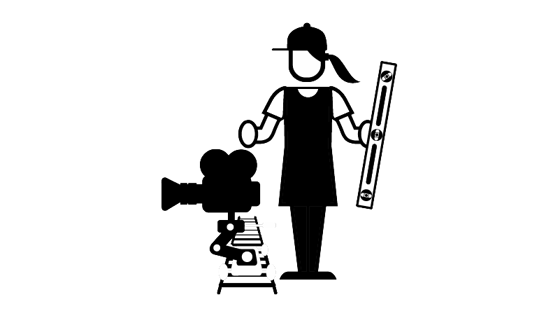Film and TV drama
Grip (Film and TV Drama)
Also known as: Key grip

What does a grip do?
Grips make sure that what the director and director of photography (DoP) want to achieve on a shoot is possible. While directors think of the artistry of the shots, grips work out how they are going to move the cameras to make that happen.
Before filming starts, grips break down the script and work out with the DoP what equipment will be needed to support the cameras for each scene. They go on recces to check out the location. If filming’s in an extreme place, like the Sahara desert or the top of Everest, they might need to adapt the equipment for the camera manoeuvres. They hire the equipment, recruit the crew and manage the budget.
On shooting days, grips get to set early to set up the equipment. As soon as the camera starts to roll, they anticipate all the camera moves and deal with the unexpected or directors changing their minds. Working closely with the DoP, they find solutions on the hoof while thinking about the preparations required for the next camera setup. At the end of each day's shooting, grips oversee the packing up of all camera-support equipment.
When filming in public spaces key grips will play a major role keeping the shoot safe. They will often liaise directly with hire companies, event managers and the police to ensure the public and the cameras aren’t harmed.
Watch
What’s a grip good at?
- Knowledge of cameras and supports: understand the technical requirements of cameras and of the baseplates, dollies, cranes and jib arms on which they are mounted
- Innovation: think quickly of practical solution to problems, adapt equipment to particular environments
- Communication: listen to the director of photography, be able to explain and share information with actors and the rest of the crew, especially when under pressure
- Organisation: schedule the equipment hire and recruiting of crew
- Lifting: know how to lift safely, have stamina
Who does a grip work with?
On larger productions, the head of department is called the key grip. Key grips have the same qualifications as grips, but they are the ones in charge on a particular production.
Best boys (who can be any gender) are second in charge and have a similar role to a department’s secretary. They do all the paperwork. They liaise with the equipment hire companies, do the risk assessments, sort out contracts with hiring staff and act as the go-between between the production office and the grip department.
Where productions are using dollies (the wheeled platform which carries the camera and the camera operator), cranes or jibs (a boom device with a camera on one end, and a counterweight and camera controls on the other), certain grips will be given the responsibility of operating those particular pieces of equipment. When the equipment is no longer needed, they are part of the regular grip crew.
Trainees help the grip with the operation of equipment that supports the camera. See separate profile: trainee grip
How do I become a grip?
Unlike many roles in film and TV drama, there’s an established route to becoming a grip. Bectu, the media and entertainment union, has a dedicated Grips Branch which holds a list of certified grips. To get onto that list, do the following:
Become a grip trainee.
Once you have had two years’ experience as a grip, take a Level 2 Diploma in Professional Competence for Grips. This will mean you can get onto the list of certified grips.
When you’ve been qualified for another two or three years, take a Level 3 Diploma in Professional Competence for Advanced Grips.
You might also be interested in…
Being a grip at concerts and events that are broadcast live on TV or working on commercials. Grips usually work across different sectors and industries.






